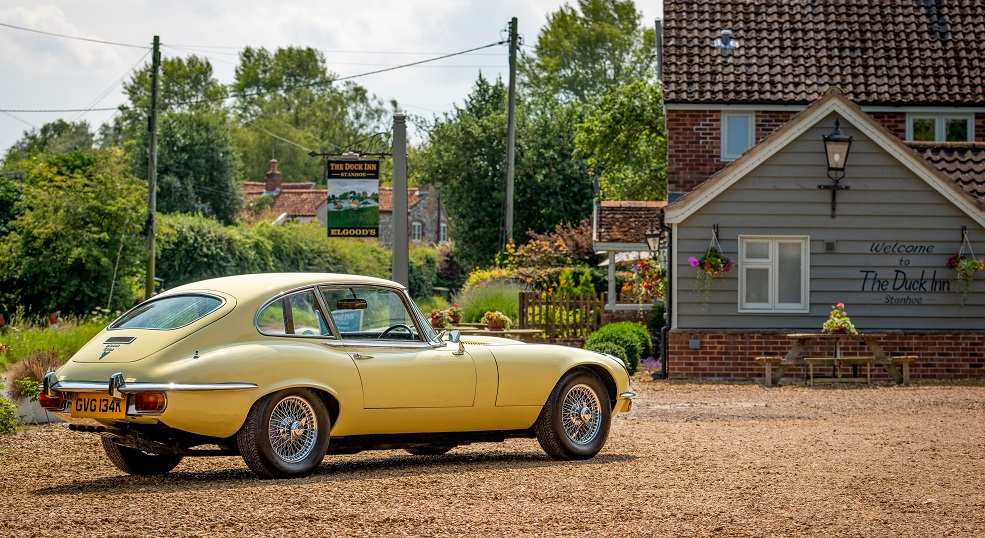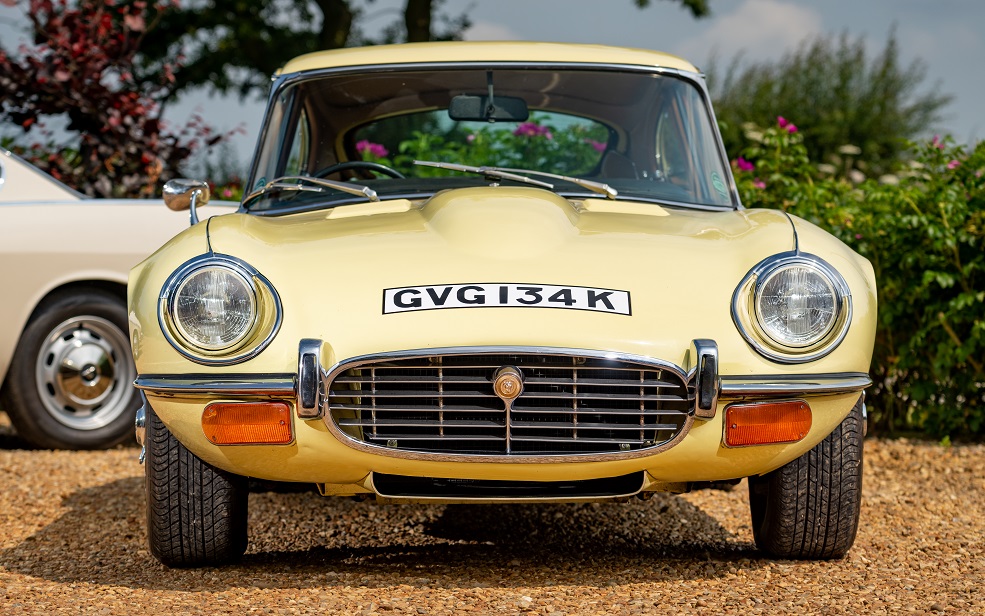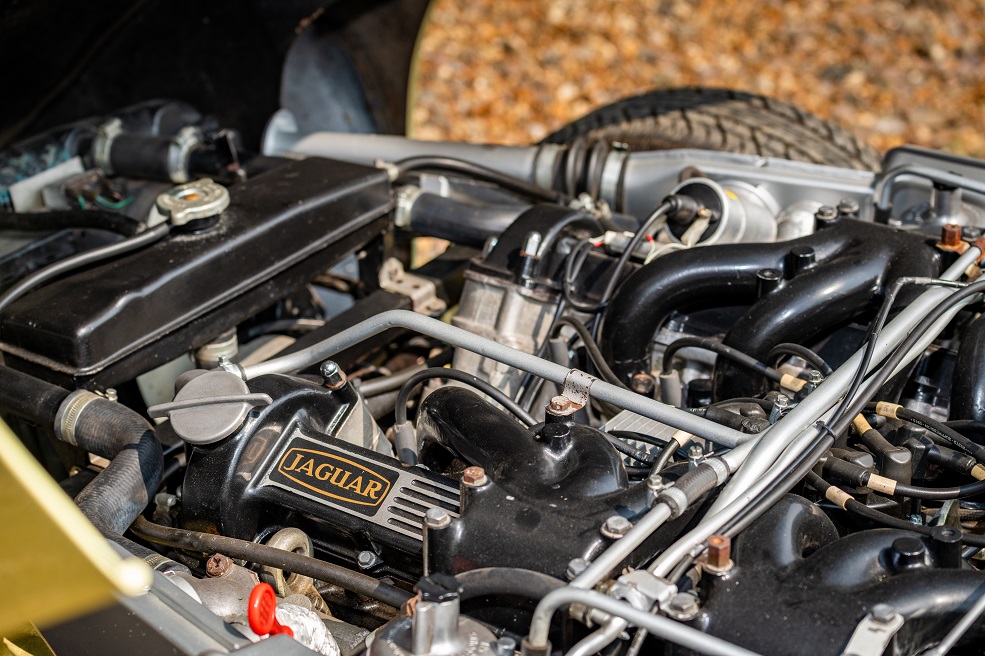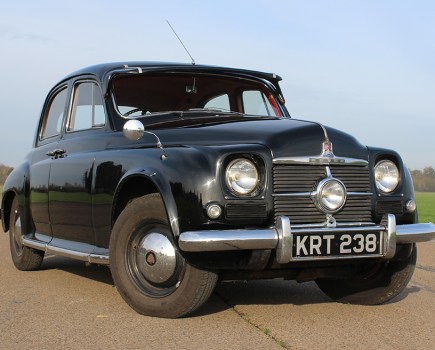The two supremely glamorous British GTs offering practicality enough to justify their high prices. How to decide between the Jensen Interceptor vs Jaguar E-Type 2+2
Jaguar E-Type
The 2+2 Jaguar E-Type was released five years after the original wowed everyone. It wasn’t a blockbuster event, but it was a significant addition to the range. With a taller, stretched body over a longer 105” wheelbase, it offered substantially more useable space than the two-seater coupe or roadster. Introduced in 1966, this was the Series 1, but by the Series 3 for 1971-1975 this more practical body shape would become the only fixed roof option available alongside the roadster. As Jaguar E-Types go, these are considered amongst the least desirable, with either V12 roadsters or early coupes at the top of the food chain. But the 2+2 is still a thoroughbred, and far from cheap. There is a great deal good about the V12 2+2 that makes it a truly special car.

The design was not much changed through the years, and so it’s only detail changes that make the Series 3. The most significant visual update is from the significantly wider tracks front and rear, with larger wheels under flared arches. From the front you’ll also notice the larger and slatted grille with a lower intake to feed the 5.3-litre V12 with air. Otherwise it’s still that famous shape. The interior is largely unchanged, though benefitting from the extra trim, soundproofing and options like air conditioning.
Also largely unchanged was the E-Type’s fantastic handling. Derived from the famous Jaguar D-Type racer, it employs a central steel monocoque and tubular front subframe fixed to sophisticated independent suspension with anti-roll bars front and rear. It may weigh nearly 250kg more than its genesis, but the E-Type V12 2+2 is still a sports car at heart. With the V12 making 272bhp and 304lb.ft of torque, it’s still no slouch either, and in fact this new engine gives the E-Type a new found feeling of luxury in its super-smooth running from idle right up to 6000rpm. Any of the sporting drivers amongst us won’t be disappointed, and in fact these models in particular have proven popular as classic road rally cars for all sorts of events.

As a GT car, the 2+2 offers lots of space for a weekend away and could even be comfortable for three adults and a child over a good distance. With the rear seats folded down, it offers 7.8 cubic feet of storage even without impairing the rear view mirror’s line of sight. What’s more, there’s space up front for six-footers, though the bucket seats can feel a little small.
As an ownership proposition, fuel will be a concern as the V12 is known to enjoy a drink – easily consuming a gallon in less than 20 miles. Maintenance can also be quite taxing, not just for the V12 but all round. E-Types are notorious for trapping moisture and rotting away and even perfect examples need to be monitored diligently. Fortunately there are good specialists out there with the know-how and parts ready to help keep your E-Type in the best possible condition even with miles piling on. The situation is actually getting better too, with Jaguar’s own Classic operation more involved than ever at providing support to the community.

As an investment, we know that the E-Type is at least never going to lose the interest of classic car enthusiasts. In fact, regardless whether or not some disagree with the later Series 3’s visual changes over the original or not, the V12 2+2 will still draw looks of most people on the street. The E-Type is a famous car, there’s no getting around it. The V12 2+2 is the most practical of all, has a magnificent engine, and is one of the most affordable ways into E-Type ownership.

Jensen Interceptor
The Interceptor was introduced in 1966, alongside a sister car, the four-wheel-drive FF (which was actually more different than you’d think). It was a 2+2 super-GT car, with a distinctive wraparound rear window, though later a simple coupe and convertible would also feature, albeit in smaller numbers. The name Interceptor had been used before, when the company made a sports car version of its post-war car. The lineage to the 1966 model is abridged by the Jensen 541 which became the C-V8. The new Interceptor was underneath largely similar to the C-V8, sharing much of its chassis and suspension design at first, though the body was all new and no longer glass-fibre – it was steel, and designed by Touring of Milan. The principle of employing an American drivetrain continued, using the same 6.3-litre Chrysler V8 as used in the late models of the C-V8 matched to the sturdy four-speed Torqueflite automatic gearbox, though a small number of Mk1 cars were built with a four-speed manual.
Just before the Mk2 debuted in October 1969, the C-V8 derived suspension was updated to replace the kingpins with ball joints and all round telescopic dampers replaced lever-type items. It’s a popular upgrade for the Mk1 cars today, though some might like the originality factor. Bigger brakes and radial tyres were also fitted.

Then the Mk2 Interceptor came out, and right from the off it proved itself the more desirable car. First off, production had by now shifted to Jensen’s West Bromwich factory away from Vignale (which built the early bodies) and so quality had improved. What’s more, it had a new interior, which was a dramatic change from the Italian-styled one of the earlier cars. Its full-width dashboard with round inserts for various dials angled downwards at the top, all looking very modern and stylish for the time.
The rear seats remained surprisingly comfortable and the boot impressively spacious – with 8.8 cubic feet of space. Outside, the car had gained a very attractive maturity too, most readily identified by new rear lights but also included slimmer bumpers with indicators mounted below, and black headlamp surrounds that immediately gave the front end a more aggressive and purposeful look. With those fashionable Rostyle wheels, it looked every bit the cool 1970s exotic, and that appeal is just as strong today.

In 1971 came the Mk3 with various improvements, particularly in the interior, and introduced perhaps the most desirable version of all, today and then. This was the Interceptor SP, with a new 7.2-litre, three-carb version of the Chrysler V8. Running a compression ratio of 10.3:1 it made 385bhp, some 55bhp more than the previous 6.3-litre unit. These are most readily identifiable by a vinyl roof. This didn’t last long, however, as ever more stringent emissions regulations stifled the outputs of the V8 and this power advantage over the older versions of the 6.3-litre was lost. However, today there is huge potential available to anyone wanting the most from their Interceptor’s performance thanks to the aftermarket for the Chrysler V8.
Jensen went into receivership in 1975, and so the Interceptor was never replaced. Perhaps at first this was a negative thing for the car, but amongst even the most casual of enthusiasts, the Interceptor was easily recognised and appreciated. It wasn’t long before prices shot up into the territory of the E-Type. In fact, today you can spend even more on an Interceptor SP than a V12 2+2 E-Type. On balance, they might still be evenly matched because of the relatively easy maintenance proposition that the drivetrain and suspension components will be on the Interceptor. In fact, there’s a neat link between the two worlds in the shape of Jaguar specialist Martin Robey, which acquired the ashes of the Jensen company and can supply all the parts you’ll need from trim details to body panels.



















